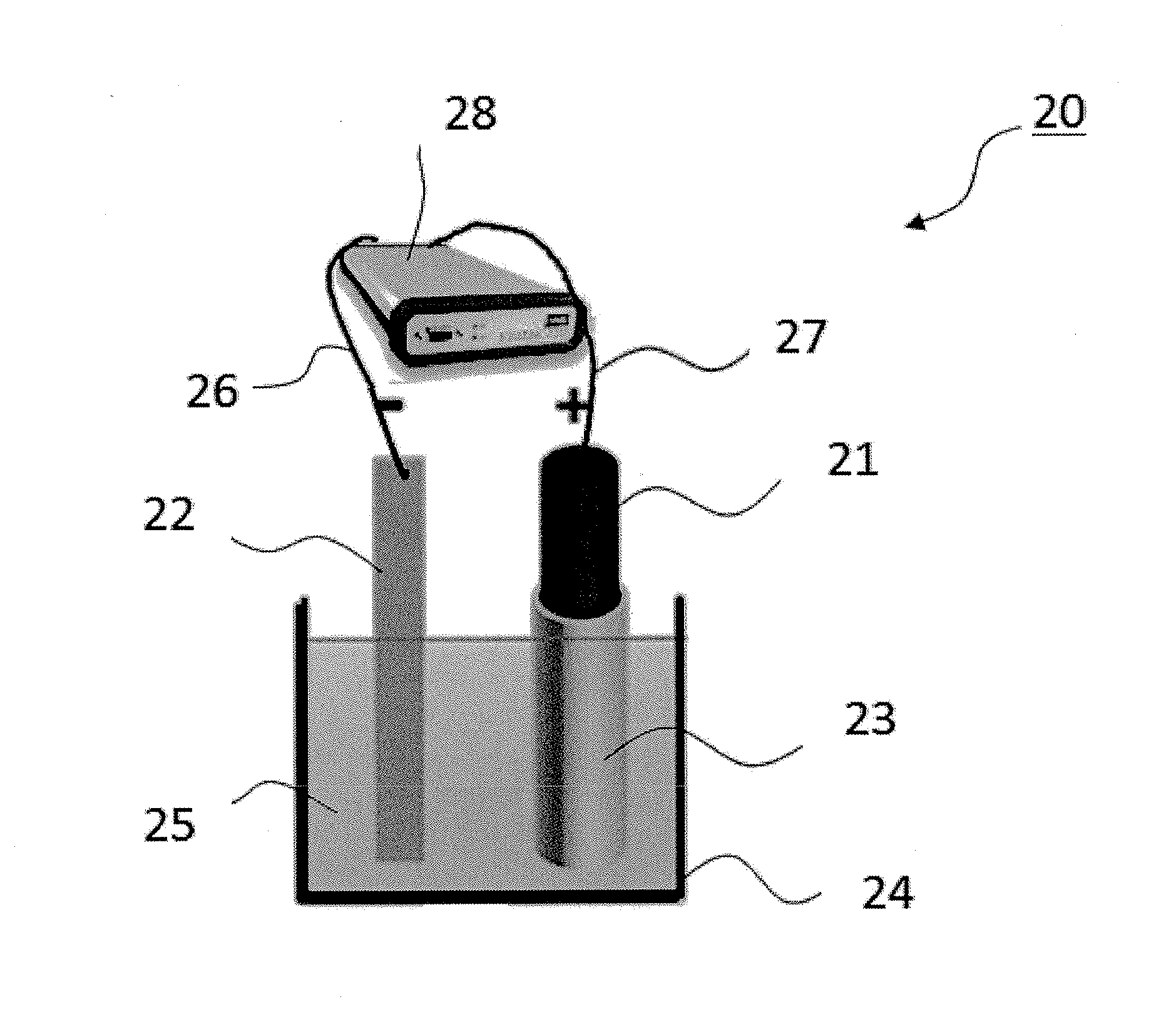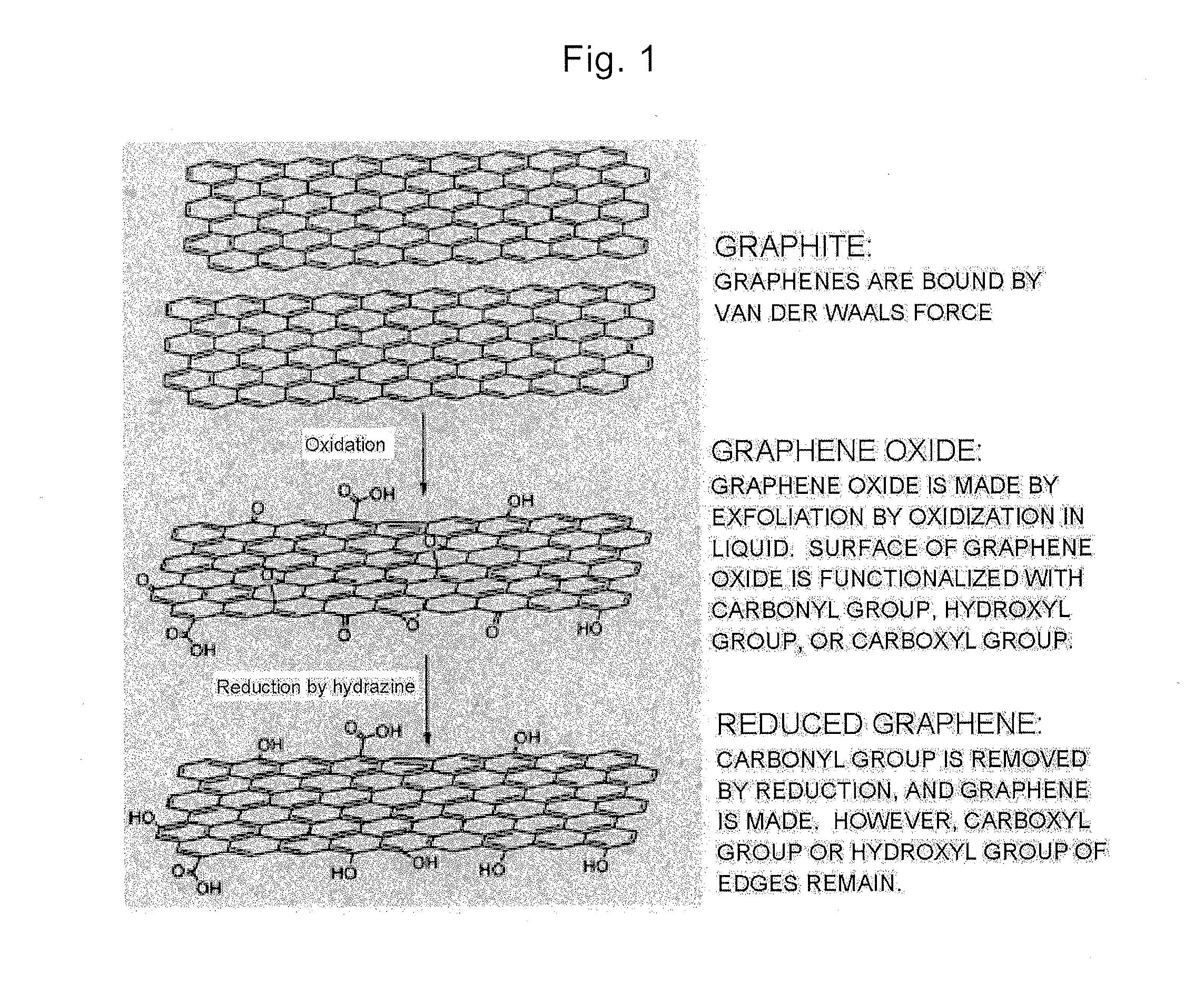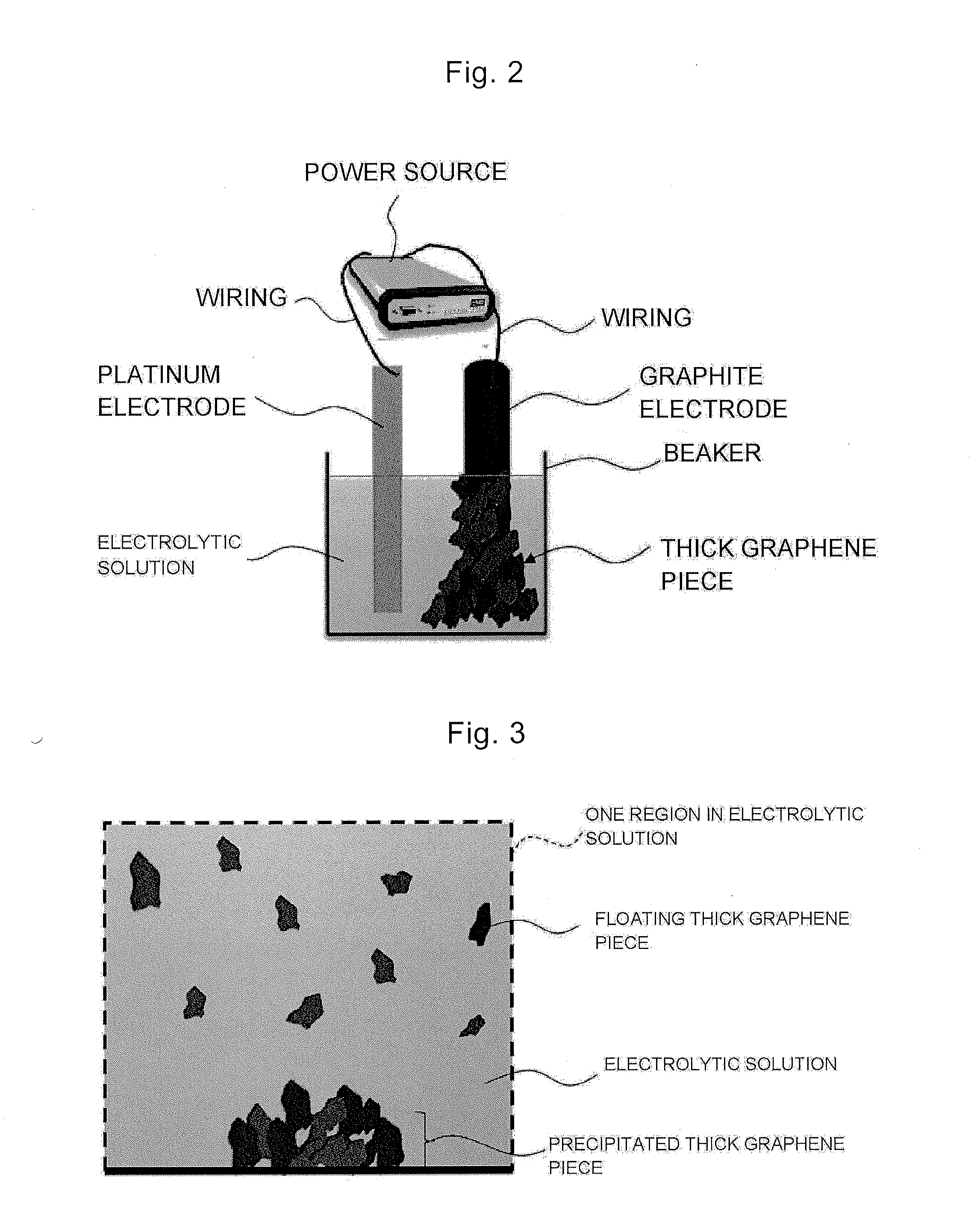Ultrathin graphene piece, apparatus for preparing ultrathin graphene piece, method for preparing ultrathin graphene piece, capacitor, and method of manufacturing capacitor
a technology of ultrathin graphene and ultrathin graphene, which is applied in the field of ultrathin graphene pieces, apparatus methods for preparing ultrathin graphene pieces, capacitors, etc., can solve the problems of environmental problems and safety problems, the cvd method cannot be used in industrial applications, and the need for a long time for oxidation-reduction process, etc., to achieve the effect of increasing
- Summary
- Abstract
- Description
- Claims
- Application Information
AI Technical Summary
Benefits of technology
Problems solved by technology
Method used
Image
Examples
example 1
Preparing Graphene by Continuous Electrolytic Exfoliation
example 1-1
[0222]First, an electrolytic exfoliation apparatus illustrated in FIG. 9 was prepared.
[0223]Here, the highly oriented pyrolytic graphite (HOPG) was used as an anode. A platinum sheet (1×2 cm2) was used as a cathode. A potentio-galvanostat which makes a current between the electrodes into a direct current was used as a power source. The filter paper Millipore having 0.22 μm of the pore size which is manufactured by Whatman was used as a porous filter which covers the electrodes. A sulfuric acid (H2SO4) which is an acidic solution was used as an electrolytic solution. Specifically, a diluted sulfuric acid which is made by diluting a sulfuric acid (4.8 g, 98% of purity) in 100 ml of deionized water was used.
[0224]Conditions for Electrolytic Exfoliation
[0225]First, +1 V was applied between the electrodes for 10 minutes (first voltage applying).
[0226]Then, +10 V was applied for one minute (second voltage applying).
[0227]Then, +15 V was applied for 2 hours (third voltage applying).
[0228]B...
examples 1-2 and 1-3
[0241]As illustrated in Table 2, electrolytic exfoliation method was performed in conditions similar to those in Example 1-1 except that a nitric acid (HNO3) and a hydrochloric acid (HCl) were respectively used as the electrolytic solution, and powder samples of Examples 1-2 and 1-3 were prepared.
[0242]Examples 1-1 to 1-3 were performed as preliminary experiments for comparing three types of electrolytic solutions, such as a hydrochloric acid (HCl), a nitric acid (HNO3), and a sulfuric acid (H2SO4). Among the three types of electrolytic solutions, such as a hydrochloric acid (HCl), a nitric acid (HNO3), and a sulfuric acid (H2SO4), the sulfuric acid showed the most excellent characteristics of electrolytic exfoliation, a diluted sulfuric acid which is made by diluting a sulfuric acid (4.8 g, 98% of purity) in 100 ml of deionized water was determined as a basic electrolytic solution of an acidic solution for electrolytic exfoliation.
TABLE 2ElectrolyticsolutionAnodeCathodeAcidic solut...
PUM
| Property | Measurement | Unit |
|---|---|---|
| voltage | aaaaa | aaaaa |
| voltage | aaaaa | aaaaa |
| voltage | aaaaa | aaaaa |
Abstract
Description
Claims
Application Information
 Login to View More
Login to View More - R&D
- Intellectual Property
- Life Sciences
- Materials
- Tech Scout
- Unparalleled Data Quality
- Higher Quality Content
- 60% Fewer Hallucinations
Browse by: Latest US Patents, China's latest patents, Technical Efficacy Thesaurus, Application Domain, Technology Topic, Popular Technical Reports.
© 2025 PatSnap. All rights reserved.Legal|Privacy policy|Modern Slavery Act Transparency Statement|Sitemap|About US| Contact US: help@patsnap.com



